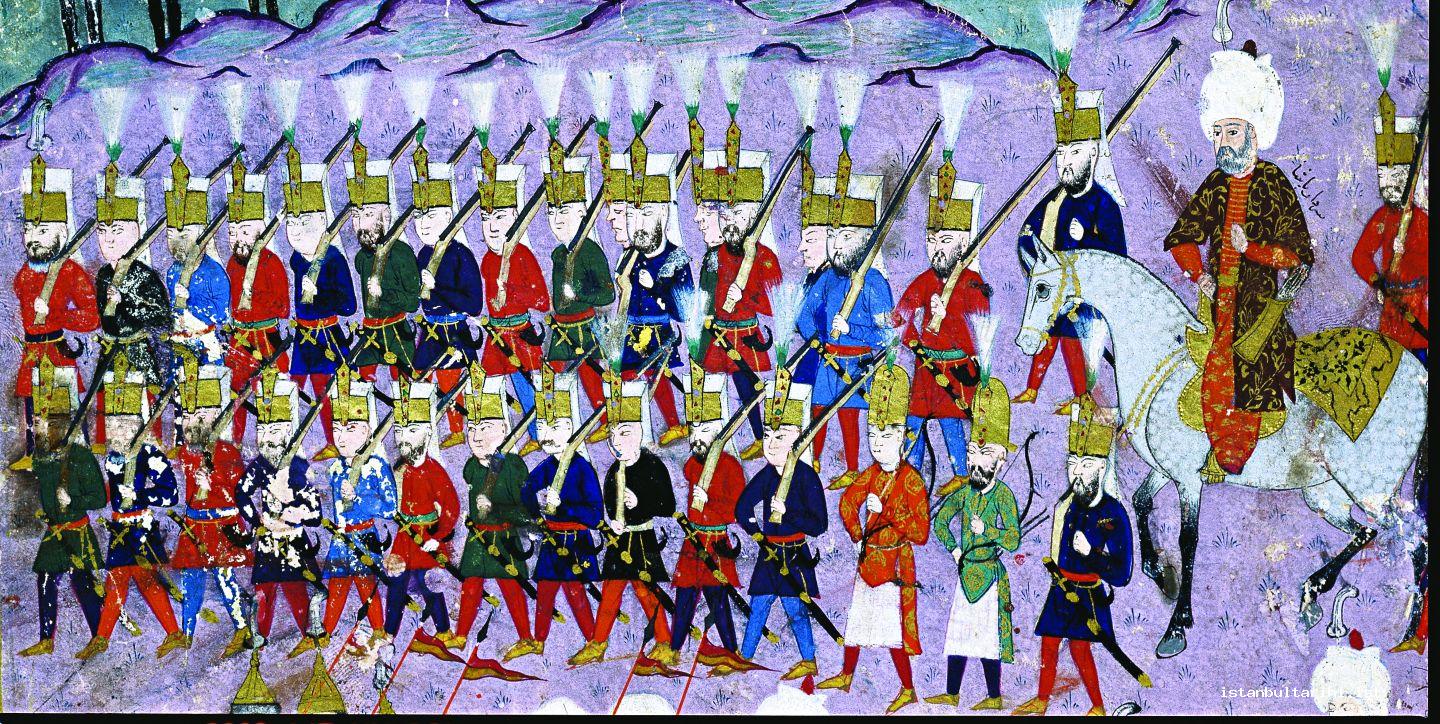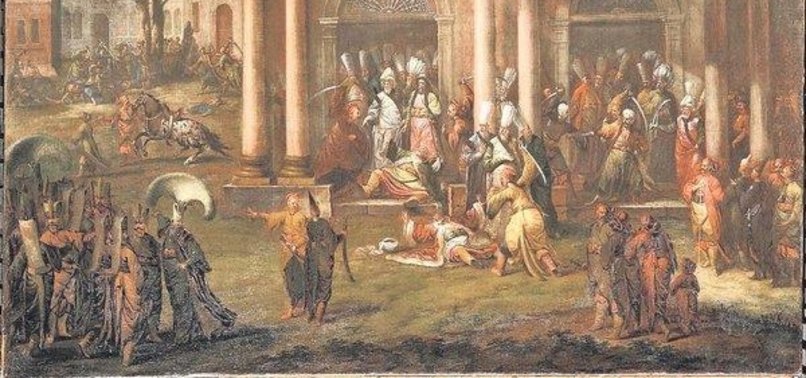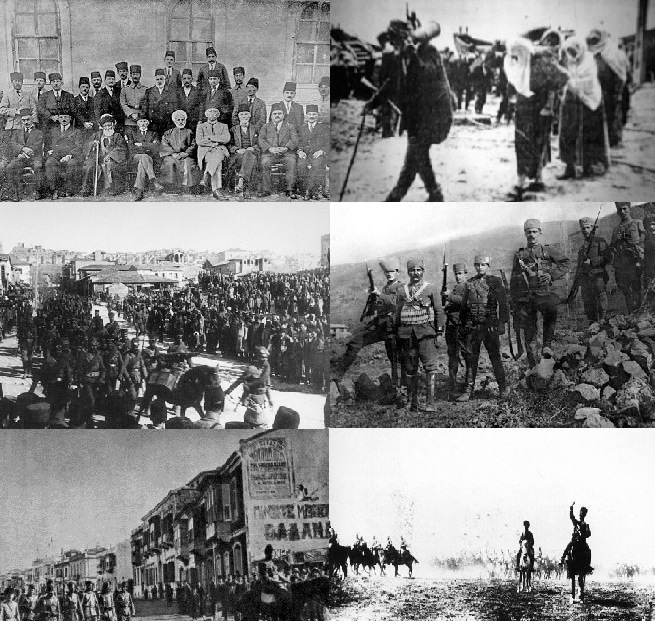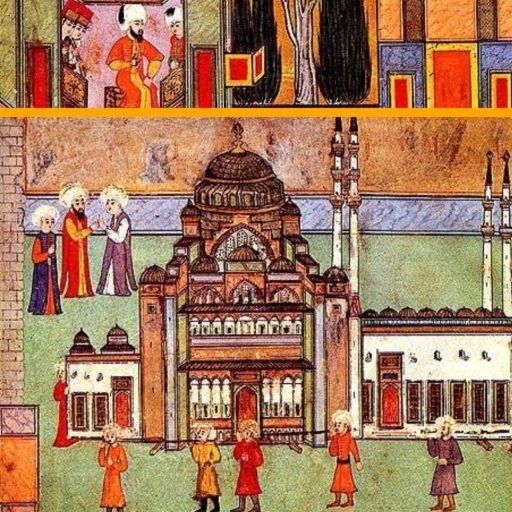Explore the complexities of rebellions in the Ottoman Empire, focusing on the Celali Revolts, key leaders, and their significant impacts on governance and society.The Ottoman Empire, a vast and complex polity, experienced profound internal challenges during the 17th century, marked notably by the Celali Revolts. This tumultuous period was not merely a backdrop for rebellion; it was a confluence of economic, political, and social strife that ignited widespread insurrections across the empire. In this article, we will delve into the intricate factors that fueled these rebellions, exploring the historical context, the motivations of key leaders, and the imperial responses to these uprisings. By understanding the Celali Revolts, we can gain insight into the broader implications of internal strife within empires and the lessons that remain relevant today. Join us as we unravel this critical chapter in Ottoman history, offering a comprehensive view of how rebellion shaped the future of one of history’s most influential empires.
Understanding Rebellions and Insurrections in the Ottoman Empire
The Ottoman Empire, at its peak, was a vast and complex state encompassing diverse cultures, languages, and religions. This diversity, while enriching the empire, also laid the groundwork for various rebellions and insurrections. Understanding the nature of these conflicts requires a comprehensive view of the socio-political landscape and the underlying motives that drove different groups to revolt against the central authority.
At the heart of these rebellions and insurrections was the struggle for power and resources. Discontent often brewed among peasants, soldiers, and even provincial governors against the imperial authority, stemming from issues such as taxation, land redistribution, and military service obligations. These grievances were frequently exacerbated by local elites who sought to exploit the dissatisfaction of the populace for their own gain.
In analyzing these conflicts, one must also consider the role of religious and ethnic identities. Various groups, particularly in the provinces, often rallied around these identities to challenge Ottoman rule. For instance, the Celali revolts in the 17th century saw a mix of social and economic factors intertwined with local religious sentiments, leading to widespread uprisings against perceived injustices.
The response to these rebellions and insurrections varied. Some were met with military force, resulting in brutal crackdowns, while others were addressed through concessions or administrative reforms aimed at placating discontented factions. The effectiveness of these responses greatly influenced the longevity and impact of the revolts on the empire's authority and governance.
Overall, the rebellions and insurrections within the Ottoman Empire reflect both the complexities of Ottoman society and the ongoing tension between central authority and local autonomy. Understanding these dynamics is crucial for grasping the historical significance of the Celali revolts and their lasting effects on the Ottoman state.

Historical Context of the Celali Revolts in the 17th Century
The Celali Revolts, occurring during the 17th century, are seminal events in the history of the Ottoman Empire, highlighting a period of intense rebellions and internal upheaval. These revolts emerged amidst a backdrop of social, economic, and political turbulence that shook the foundations of the empire. The century was marked by increased territorial losses, especially in the wars against Austria and Persia, which drained the empire's resources and strained its administrative capabilities.
In the early 1600s, the Ottoman Empire grappled with the consequences of a faltering central authority, where the sultans struggled to maintain control over increasingly autonomous provincial governors and local leaders. The administrative decay fostered a sense of disillusionment among various segments of society, paving the way for dissatisfaction. Discontented and marginalized groups, including disbanded soldiers, peasants, and the urban poor, initiated uprisings, seeking redress for their grievances.
The Celali Revolts were significantly influenced by economic hardship as agricultural failures and inflation escalated food shortages and poverty. The rising tax burdens imposed by the central authority to fund military campaigns exacerbated this economic distress, leading to widespread resentment among the peasantry. This unrest was further fueled by the erosion of traditional societal structures, as local tribal and religious leaders sought to fill the power vacuum left by the ineffectual state.
Fueled by these pressures, the Celali leaders emerged—figures who would become instrumental in mobilizing dissent and calling their followers to arms. Their activities underscored a broader socio-political context where rebellion became a means of survival, challenging the very legitimacy of the Ottoman state. Thus, the Celali Revolts were not merely isolated incidents of rebellions and unrest but rather pivotal reflections of an empire in crisis, grappling with both internal strife and external challenges that would shape its future trajectory.
Key Factors Contributing to Ottoman Internal Strife
The Ottoman Empire, once a formidable power, experienced numerous internal conflicts throughout its history, particularly during the turbulent 17th century. Several key factors contributed to this internal strife, leading to significant rebellions and insurrections, most notably the Celali Revolts.
One of the primary causes of unrest was the economic decline that afflicted various regions of the empire. As agricultural productivity waned, due to both climatic changes and mismanagement, many peasants found themselves impoverished and discontented. This economic desperation often fueled rebellion, as the rural populace sought to challenge the authority of landlords and state officials.
Additionally, the administrative fragmentation of the empire played a pivotal role in inciting internal disputes. The powers vested in local governors (or sanjakbeys) frequently led to corruption and abuse, eroding loyalty to the central government in Istanbul. This lack of effective governance created a breeding ground for dissent as local leaders vied for power and resources, further complicating the political landscape.
Religious tensions also contributed to the empire's instability. While the Ottomans prided themselves on a relative degree of tolerance towards various faiths, sectarian divisions, particularly between Sunni and Shia Muslims, occasionally erupted into violence. Such divisions not only fueled civil discord but also complicated the government's ability to unify its subjects under a common identity.
Moreover, social stratification within Ottoman society exacerbated feelings of alienation among different classes, particularly the rural population. As wealth became concentrated in the hands of the elite, the marginalized segments of society, including peasants and small artisans, increasingly felt the weight of social injustice. This discontent frequently manifested in localized uprisings aimed at redressing grievances and reclaiming social equity.
In summary, the convergence of economic hardship, administrative corruption, religious differences, and social inequality significantly contributed to the internal strife within the Ottoman Empire, creating an environment ripe for rebellions and insurrections like the Celali Revolts. Understanding these factors is essential to grasp the complexities of the empire's historical narrative and the challenges it faced during its decline.
Impact of Economic Hardships on Rebel Movements
The economic conditions during the 17th century significantly influenced the trajectory of rebellions and insurrections within the Ottoman Empire, particularly the Celali revolts. A combination of factors, including inflation, declining agricultural productivity, and heavy taxation, created an environment ripe for dissent among various social classes.
As the empire expanded, agricultural reforms and the imposition of tax burdens led to increased poverty among the peasant class. The inability of farmers to pay taxes often resulted in their disenfranchisement, further exacerbating the local grievances. Many peasants lost their lands, leading to mass migrations toward urban areas, where they became susceptible to radical influences and mobilization.
Moreover, the state's focus on military campaigns often diverted resources away from local economies, resulting in severe shortages of basic goods. This scarcity not only increased prices but also created a sense of insecurity. Economic distress, coupled with corrupt local officials who abused their powers, increased resentment against the central authority.
The connection between economic hardship and the surge in rebellions and revolts can be traced in various uprisings. For instance, the Celali rebels initially garnered support from the impoverished peasantry, who viewed them as symbols of resistance against the oppressive economic conditions imposed by the state. The emergence of these leaders provided hope and leadership to disenfranchised populations.
Ultimately, the economic pressures of the time were pivotal in galvanizing support for the Celali revolts, demonstrating how financial distress can serve as a catalyst for wider unrest and rebellion within an empire.

Political Discontent: The Role of Governance in Rebellion
Throughout the history of the Ottoman Empire, rebellions and insurrections were often fueled by political discontent stemming from the governance practices of the ruling authorities. The administrative mechanisms that were put in place to maintain control over vast territories frequently became sources of frustration for various segments of society, ranging from local chieftains to the peasantry.
One of the significant aspects of governance that contributed to political discontent was the heavy taxation system. The Ottomans relied on a complex tax system to fund their military and administrative expenses, but this often placed an exorbitant burden on rural populations and small-scale farmers. When these groups felt the economic strain of high taxes coupled with low agricultural yields, it triggered feelings of resentment towards the state, paving the way for rebellion.
Additionally, the corruption and inefficiency of local administrators exacerbated the situation. Many governors, appointed by the central authority, were more focused on enriching themselves than addressing the needs of the populace. This disconnect between the rulers and the ruled led to a loss of faith in the legitimacy of the regime, further igniting sentiments of rebellion. Many citizens saw the local authorities as extensions of an oppressive central government, leading to a blanket rejection of Ottoman rule.
The social stratification within the empire also played a crucial role in fostering discontent. The elite class often enjoyed privileges and power, while commoners were left to navigate their struggles without adequate support from their rulers. This divide created a fertile ground for unrest, as the marginalized groups sought to reclaim their agency through rebellion.
Ultimately, the failures of the Ottoman governance system to address the grievances of its subjects were instrumental in inciting rebellions and revolts like the Celali Revolts. Understanding this relationship between political discontent and insurrection provides valuable insights into the complexities that underpinned the challenging dynamics of the Ottoman Empire.
Major Celali Leaders and Their Contributions to Rebellion
The Celali Revolts, significant uprisings against the Ottoman Empire during the late 16th and early 17th centuries, were characterized by several influential leaders who played pivotal roles in mobilizing and inspiring discontent among the populace. These leaders not only embodied the frustrations of various social groups but also contributed to the enduring legacy of rebellion in the region. One prominent figure was Köprülü Mehmed Pasha, who, despite initially successful governance, eventually became synonymous with the empire's efforts to suppress the revolts. His involvement demonstrated a duality in leadership, as he both managed to quell uprisings and inadvertently inspired further resistance through heavy taxation and military campaigns. His policies, while aimed at restoring order, also fueled the flames of dissatisfaction among local populations. Another notable leader was Deli Hasan, famed for his charisma and military prowess. Emerging from the province of Anatolia, Deli Hasan rallied many disillusioned soldiers and farmers under his banner, seeking justice against corrupt officials and economic exploitation. His campaigns were characterized by a series of successful guerrilla tactics, which gained him a loyal following and made him a symbol of resistance against Ottoman authority. Bıyıklı Mustafa was yet another significant figure. His rebellion, marked by localized uprisings in the central and eastern provinces of the empire, drew attention to the pressing grievances related to taxation and land ownership, which were rampant during this period. His leadership emphasized the social dimensions of the rebellions and respectively highlighted the collective frustrations of the agrarian sector. Kara Mustafa, often labeled a notorious insurgent, also embodies the essence of the Celali Revolts. His reputation as a ruthless leader who openly challenged the imperial authority incited fear among the Ottomans. However, his actions also mobilized rural communities, demonstrating how a single leader's approach could galvanize collective action against perceived injustices. The contributions of these leaders were not uniform; each brought forth unique motivations and strategies that resonated with various segments of society. The challenges posed by the Celali leaders reflected broader issues of governance, economics, and societal structure within the Ottoman Empire, ultimately highlighting the complexities of power, control, and the consistent push for reform among the populace. In summary, the major Celali leaders significantly shaped the nature of rebellion during this tumultuous era, underscoring the integral connection between individual agency and collective dissent against the backdrop of increasing internal strife within the Ottoman Empire. Their legacies continue to inform our understanding of rebellion and its far-reaching implications in historical contexts.

The Social Dynamics Behind the Celali Revolts
The rebellions and insurrections within the Ottoman Empire, particularly the Celali Revolts, were profoundly shaped by social dynamics. Various social groups played pivotal roles in these uprisings, each with its unique grievances and aspirations that contributed to the widespread unrest.
At the core of the social fabric were the disillusioned peasantry and lower classes. Economic decline, exacerbated by heavy taxation and land loss, instigated resentment against the ruling authorities. Many peasants found themselves trapped in a cycle of debt, leading to increased anger towards the state, which they perceived as exploitative. This discontent was further fueled by the breakdown of the traditional feudal system, which had once provided some stability and security.
Moreover, the rural class often aligned with local leaders who promised them better conditions and the chance for revenge against oppressive landlords and local officials. These leaders, often former soldiers or disaffected members of the Janissary corps, galvanized communities, weaving narratives that framed the struggle as one of justice against corruption.
Urban areas were also significant in the social dynamics of the Celali Revolts. Displaced populations and marginal groups, including artisans and tradesmen struggling against economic hardship and competition, found themselves drawn to the rebel causes. Their demands often included better working conditions, reduced taxes, and protection from local power brokers.
Religious sentiments also played a crucial role, as many Celali leaders sought to position their movements as purveyors of divine justice against the perceived corruption of the state. This alliance between social grievances and religious rhetoric helped to unify diverse groups under a common cause and amplified the rebels' messaging.
The interplay of these social factors illustrated a significant aspect of the Celali Revolts: they were not merely political insurrections but rather complex movements rooted in societal upheaval and the quest for identity and justice within a rapidly changing Ottoman landscape.
Ottoman Responses to Rebellions: Strategies and Failures
The rebellions and insurrections faced by the Ottoman Empire during the Celali Revolts prompted varied responses from the central authority. The Ottomans attempted to quell these upheavals through military force, administrative reforms, and strategic alliances. Below are some key strategies they employed and their respective outcomes:
| Response Strategy | Description | Outcome |
|---|---|---|
| Military Suppression | Deployment of troops to conflict zones to engage rebels directly. | Often resulted in temporary success, but many revolts re-emerged. |
| Negotiation and Co-optation | Attempting to negotiate with rebel leaders, offering concessions to pacify discontent. | Occasional success in calming specific revolts, but generally ineffective at addressing root causes. |
| Administrative Reforms | Implementation of reforms aimed at improving governance and addressing grievances. | Limited effectiveness; often failed to reach deeper socio-economic issues. |
| Creation of Alliances | Forging alliances with local elites and influential figures to build support against rebels. | This strategy sometimes strengthened central authority but could also backfire if alliances proved unreliable. |
Despite these efforts, the failures of the Ottoman responses were significant. The persistence of rebellions and the recurrence of revolts highlight the inadequacies in the imperial responses. The failure to adapt to the changing social and economic landscapes made it increasingly difficult for the Empire to maintain control. The Celali Revolts exemplified a pivotal moment in Ottoman history, showcasing how ineffective responses to internal unrest could undermine the Empire's authority, illustrating the need for more substantive reforms to address the underlying issues driving the unrest.
Consequences of Insurrections for Ottoman Authority
The various rebellions and insurrections that plagued the Ottoman Empire, particularly during the 17th century, had profound implications for its authority and governance. The Celali Revolts, amongst others, highlighted the weaknesses in the imperial system and shed light on the sociopolitical landscape of the time. One significant consequence was the erosion of centralized control. As local leaders seized power amid the chaos, the Sultan's authority was increasingly challenged, leading to a fragmented governance structure. This decentralization paved the way for regional powers to assert their autonomy, directly undermining the traditional system of governance. Moreover, these insurrections prompted a reevaluation of the imperial fiscal policies. The economic strains caused by continuous uprisings led to a fiscal crisis, compelling authorities to increase taxes, which in turn fueled further discontent among the populace. This cycle created a pervasive atmosphere of unrest, as the disillusioned subjects sought alternatives to the ruling powers. The social ramifications were equally significant, as the fabric of Ottoman society was tested. The conflicts bred a sense of mistrust between various ethnic and religious groups, thereby complicating the already intricate social dynamics of the empire. This distrust often resulted in a fragmented society where loyalty to the central authority diminished. Lastly, the series of rebellions and their repercussions forced the Ottoman leadership to adapt militarily and politically. They implemented reforms, including the establishment of more modern military units and changes to administrative practices, in an attempt to regain control and restore order. While these reforms had limited success in the short term, they set the stage for future transformations within the empire. In summary, the consequences of insurrections during this tumultuous period were both immediate and far-reaching, challenging the very foundations of Ottoman authority and catalyzing changes that would shape the empire's trajectory in the years to come.

Lessons Learned from the Celali Revolts in Ottoman History
The Celali Revolts provide significant insights into the underlying issues of governance, social structure, and economic management within the Ottoman Empire. These rebellions, which unfolded during a turbulent period in the 17th century, highlight several lessons that are still relevant in understanding the dynamics of rebellions and insurrections.
| Lesson | Description |
|---|---|
| Importance of Strong Governance | A lack of effective governance often leads to increased discontent among the populace. The Celali Revolts exposed the weaknesses in administrative structures and highlighted the need for accountability in leadership. |
| Economic Management | Economic instability, fueled by heavy taxation and poor harvests, was a significant catalyst for the revolts. This underlines the necessity for governments to adopt policies that address economic grievances before they escalate into unrest. |
| Social Cohesion | The revolts illustrated how social divisions, particularly between different ethnic and religious groups, could be manipulated to mobilize resistance. Building a cohesive national identity can mitigate such divisive forces. |
| Communication and Public Sentiment | Understanding the grievances of the populace and maintaining open channels of communication can prevent misunderstandings and foster trust between the government and its citizens. |
In summary, the lessons derived from the rebellions and insurrections during the Celali Revolts highlight the interconnectedness of governance, economic stability, social unity, and the importance of responsive leadership. Recognizing these elements is crucial for preventing future insurrections and maintaining a stable society.
Frequently Asked Questions
What were the Celali Revolts?
The Celali Revolts were a series of uprisings that occurred in the late 16th and early 17th centuries within the Ottoman Empire, primarily driven by economic distress, social changes, and dissatisfaction with local officials.
What factors contributed to the outbreak of the Celali Revolts?
Several factors spurred the Celali Revolts, including heavy taxation, famine, the disbandment of local military units, and the decline of central authority, which led to widespread discontent among the peasantry and soldiers.
Who were the key players involved in the Celali Revolts?
Key players included local leaders, known as 'Celalis,' who mobilized support among various groups, including disbanded soldiers, peasants, and disenfranchised townspeople seeking justice against corrupt officials.
How did the Ottoman government respond to the Celali Revolts?
The Ottoman government responded by deploying military forces to suppress the uprisings, but they also attempted reforms to alleviate economic pressure, such as reducing taxes and restoring local governance to improve relationships with the populace.
What was the impact of the Celali Revolts on the Ottoman Empire?
The Celali Revolts highlighted the weaknesses within the Ottoman administration and the growing disconnect between the central government and provincial leaders, ultimately leading to political reforms and changes in the empire’s governance structure.
How did the Celali Revolts affect the social structure of the Ottoman Empire?
The revolts contributed to shifts in the social structure by empowering certain local leaders at the expense of traditional elites, leading to a reconfiguration of power dynamics in various regions.
What lessons can modern societies learn from the Celali Revolts and similar insurrections?
Modern societies can learn the importance of addressing socioeconomic grievances, maintaining effective governance, and ensuring communication between central authorities and local populations to prevent rebellion and strife.

